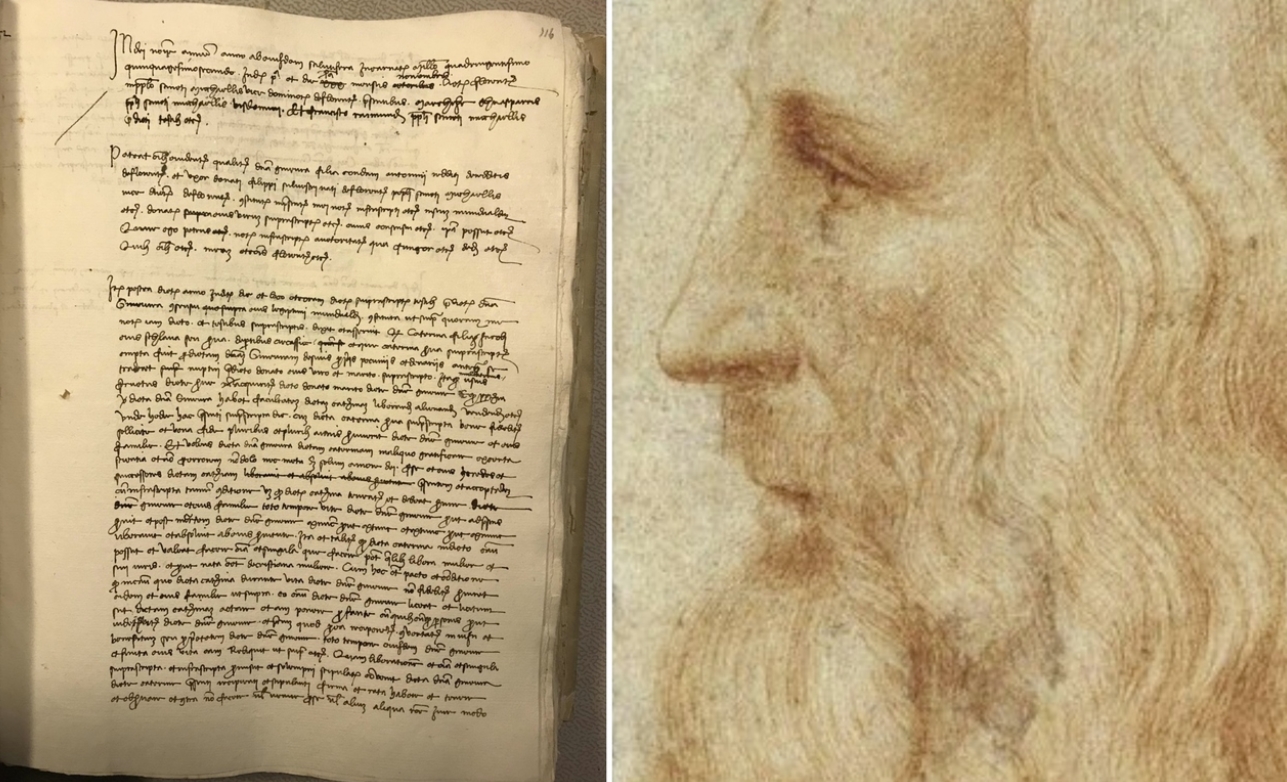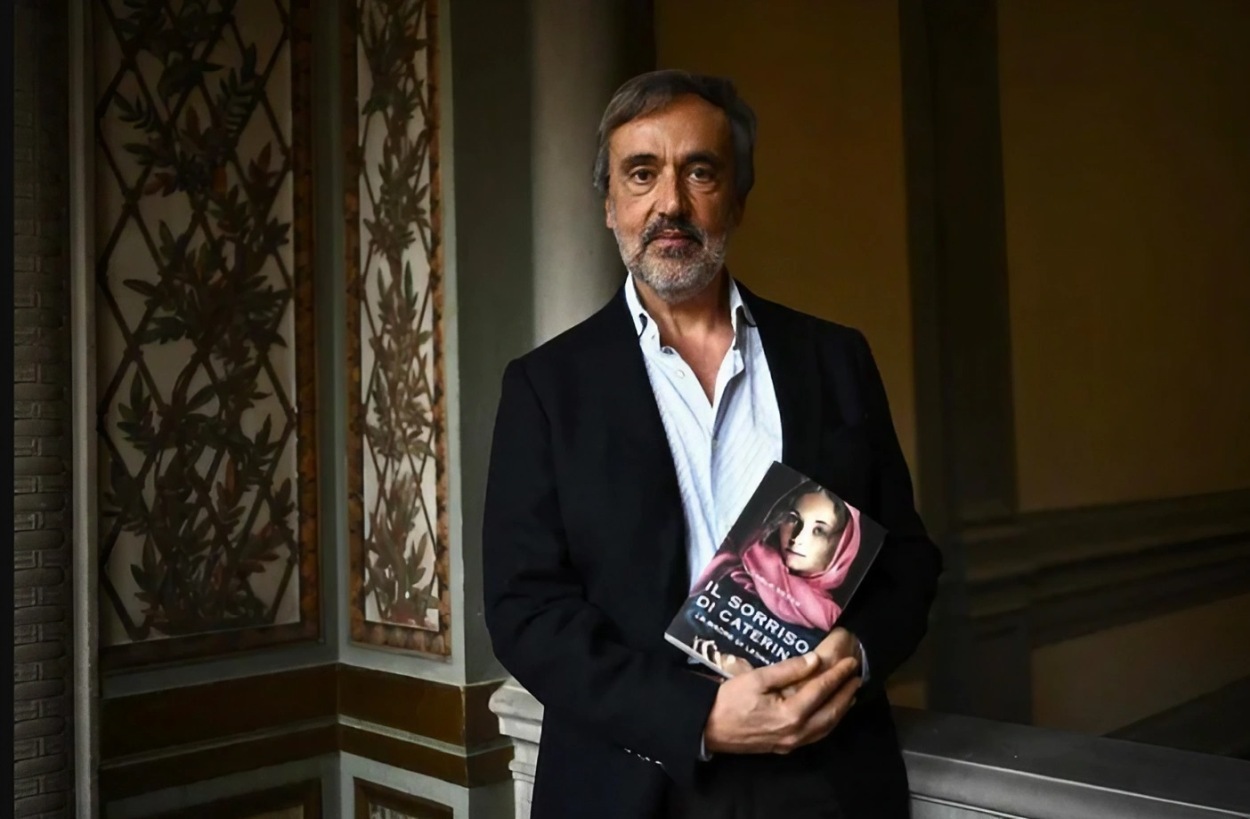Viacheslav Chirikba's Hypothesis on da Vinci's Mother Confirmed by Italian Archives

Viacheslav Chirikba's hypothesis that Leonardo da Vinci's mother was a Circassian slave has been confirmed by Italian archives.
The father of the great artist and scientist, Leonardo da Vinci, was a Florentine notary named Ser Piero da Vinci from the Tuscan city of Florence. However, apart from her name, Caterina, nothing is known about his mother, and her identity has remained shrouded in mystery.
In 2018, in his historical essay titled "The Mystery of Caterina. Who Was the Mother of Leonardo da Vinci?" («Загадка Катерины. Кем была мать Леонардо да Винчи?»), Professor Viacheslav Chirikba put forward a hypothesis suggesting that Caterina might have been an Abkhazian or Circassian slave brought to Italy by Genoese or Venetian merchants from the Black Sea coast of the Caucasus.
The book "The Mystery of Caterina. Who Was the Mother of Leonardo da Vinci?" by Viacheslav Chirikba was published in St. Petersburg: Piter, in 2018.
The full book in PDF can be downloaded by clicking here (5.3 MB)
Viacheslav Chirikba is an Abkhazian linguist and politician, from October 11, 2011 to September 20, 2016, he held the post of the Minister of Foreign Affairs of Abkhazia. He has a doctorate in philology, title of professor; he is a full member of the Academy of Sciences of Abkhazia, an extraordinary and plenipotentiary ambassador of the Republic of Abkhazia, the author of books and articles devoted to languages, history and mythology of the peoples of the Caucasus. He is also the author of the book "Abkhazia and Italian city-states of the XIII-XV centuries."
This hypothesis by Chirikba has been confirmed by Italian Professor Carlo Vecce who has spent decades studying da Vinci and curating his works. The renowned scholar found the deed of liberation in the State Archives of Florence, which was signed by Piero da Vinci, the notary and father of Leonardo.

According to the newly discovered document, Catherine was born a princess in the Caucasus Mountains but was later enslaved and sold by merchants from the Black Sea to Venice before being eventually freed. Who knows if she will go down in history as the "key" to Leonardo's mother? Even the family members of the great Tuscan genius seem like an enigmatic puzzle, with Catherine being the central protagonist. Professor Carlo Vecce, a philologist and historian of the Renaissance, who is one of the leading experts on the artist, has discovered this unpublished document among the folders of the historical archive of Florence, which attests to the notary Piero da Vinci's deed of liberating Caterina from slavery.
+ What do we really know about Leonardo da Vinci's mother? by Finestre sull'Arte
+ Cosa sappiamo davvero sulla madre di Leonardo da Vinci? | Finestre sull'Arte
+ Professor says Leonardo da Vinci research shows his mother was slave | The Times
+ Has the mystery of Leonardo da Vinci's mother finally been solved? | NBC
The Unpublished Document
A paper that lends substance to the reconstruction of the historical profile of the woman in the new book by the scholar "The Smile of Catherine" (Giunti) was presented in Florence. If this biographical story is true, it would definitively silence the recent and somewhat "phantasmagorical" version of the story in which Leonardo's mother was said to have been of Chinese origins. The importance of the discovery of the document has attracted the attention of the academic world and art historians. It provides a background that sheds new light on the woman's character, but more importantly, on the incredible fate of little Leonardo da Vinci, who, despite being the illegitimate son of Caterina and Piero (who would never marry), was recognized and welcomed by the da Vinci family.

The notary who freed Caterina is the same person who loved her when she was still a slave and with whom she had this child, Leonardo," explained Vecce. The document, dated "Florence 2 November 1452," is the deed of liberation of the slave Caterina by her mistress, a certain Ginevra d'Antonio Redditi, wife of Donato di Filippo di Salvestro Nati. Two years earlier, Nati had leased Caterina as a nurse to a Florentine knight. In the deed, we read that Caterina was described as "filia Jacobi eius schiava seu serva de partibus Circassie." The document is signed by the notary Piero da Vinci, who was Leonardo's father. Leonardo was only six months old at the time, having been born on April 15, 1452. The particularity of the story is not so much that Piero, a member of the upper social class, had a relationship with a woman of lower rank, even a slave, but rather that the woman was freed and that the child was accepted.
It was probably Leonardo's grandfather, Antonio (Piero's father), who welcomed Leonardo, driven by the fact that Piero had no legitimate children from official wives. In fact, history tells us that Leonardo was sent to live with his mother Caterina and her partner, Antonio Butti (known as the Wrangler), who was forced on her as her husband, for up to ten years. At the age of five, his grandfather even had him baptized. He was an illegitimate but much-loved child.

Carlo Vecce holds a copy of his book in Florence on Tuesday. Vecce is a specialist in da Vinci's life and work.
The Journey of Slavery
But how did Caterina arrive in Florence? According to Carlo Vecce's reconstruction, Leonardo's mother's daring journey from the Caucasus mountains began in chains; she was enslaved and taken as far as Azov, the ancient Tana, at the mouth of the Don River. From there, she was transported through the Black Sea and arrived in Constantinople around 1439. Here she passed into the hands of Venetian merchants, who transferred her to the Venice lagoon the following year. In 1442, Caterina arrived in Florence thanks to the husband of her mistress Ginevra, an old Florentine adventurer, Donato di Filippo di Salvestro Nati, who had already emigrated to Venice, where he had slave girls from the Levant, the Black Sea, and the Tana at his service. Before dying in 1466, Donato left his money to the small convent of San Bartolomeo a Monteoliveto, outside Porta San Frediano, for the construction of the family chapel and his own burial. The trusted notary was always Piero da Vinci. Vecce also hypothesizes that the notary Piero had a sexual relationship with the fifteen-year-old Caterina in Palazzo Castellani, now the seat of the Museo Galileo, on the Florentine riversides, where she served as a servant.
Although any new discovery about da Vinci is hotly contested by the small world of experts who study him, Vecce is convinced that the evidence he found.
Among the documents he found is one written by da Vinci's father himself, a legal document of emancipation for Caterina, "to recover her freedom and recover her human dignity".
